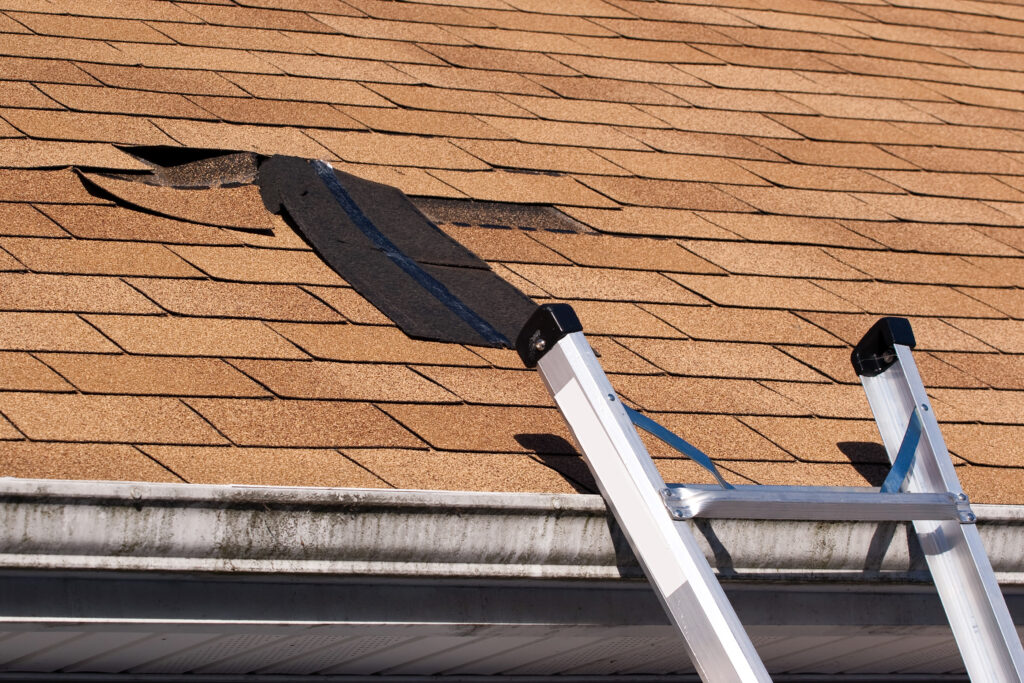Wind Damage 101: How to Spot and Repair Wind-Affected Roofs
High winds can wreak havoc on your roof, causing anything from minor shingle damage to severe structural issues. If left unaddressed, wind damage can lead to costly repairs and even compromise the integrity of your home.
Understanding the signs of wind damage and knowing how to respond can help you protect your investment and avoid bigger problems down the road. That’s where we come in.
For over a decade, Rescue My Roof has been a leader in the roofing industry. We’ve helped thousands of Wisconsin homeowners protect their homes. Now, we’re here to help you, too.
In this guide, we’ll cover how to identify wind damage, what steps to take for repairs, and how to prevent future issues. Ultimately, you’ll know how to handle wind damage like a pro.
How Wind Damages Your Roof
Wind damage occurs when strong gusts lift, loosen, or tear off roofing materials. The edges and corners of your roof are particularly vulnerable, as wind can easily get underneath shingles and cause them to peel away.
Additionally, wind-driven debris such as tree branches can puncture or dent roofing materials, leading to leaks and weakened structural integrity.
Signs of Wind Damage
Knowing what to look for can help you identify wind damage early. Here are the seven most common signs:

- Missing or Loose Shingles – If you notice patches where shingles are completely missing, it’s a clear sign of wind damage.
- Curling or Lifting Shingles – Strong winds can cause shingles to curl at the edges or lift, exposing the underlayment.
- Granule Loss – If you find excessive shingle granules in your gutters, wind damage may be wearing down your roofing materials.
- Damaged Flashing – Bent or loose flashing around chimneys, vents, and skylights can be an indicator of wind impact.
- Water Leaks or Stains – Wind damage often leads to roof leaks, which may appear as stains on ceilings or walls inside your home.
- Debris on the Roof – After a storm, inspect your roof for fallen branches, leaves, or other debris that could have caused hidden damage.
- Sagging or Structural Damage – Severe winds can weaken the structure of your roof, leading to noticeable sagging or bowing.
Best Steps to Take if Your Roof Has Wind Damage
If you suspect your roof has been damaged by wind, follow these steps:
- Conduct a Visual Inspection – Look for missing shingles, debris, and other visible damage from the ground. Avoid climbing onto the roof unless necessary.
- Check for Interior Damage – Inspect your attic and ceilings for signs of leaks or water damage.
- Document the Damage – Take clear photos and videos of any damage to provide evidence for insurance claims.
- Make Temporary Repairs – If possible, use a tarp or roofing cement to cover exposed areas and prevent further damage.
- Contact Your Insurance Provider – Report the damage to your insurance company and inquire about coverage for repairs.
- Hire a Professional Roofer – A qualified roofing contractor can assess the full extent of the damage and recommend the best repair solutions.
How to Prevent Wind Damage in the Future
While you can’t control the weather, you can take steps to protect your roof from wind damage:
- Regular Inspections – Schedule routine roof inspections to catch potential problems early.
- Secure Shingles – Use high-quality, wind-resistant shingles rated for your area’s weather conditions.
- Reinforce Flashing & Seals – Ensure flashing around vents, chimneys, and skylights is properly secured.
- Trim Overhanging Trees – Remove weak or overhanging branches that could fall onto your roof during a storm.
- Upgrade to a More Durable Roof – If you live in a high-wind area, consider impact-resistant roofing materials designed to withstand strong gusts.
Protecting Your Roof From Wind Damage
Wind damage can be a serious threat to your roof, but with the right knowledge and precautions, you can minimize its impact.
By spotting warning signs early, acting quickly on repairs, and investing in preventative measures, you can keep your home safe and secure against the forces of nature. If you’re unsure about the condition of your roof after a storm, contact a professional roofer for an inspection and peace of mind.
Learn more with “Choosing the Best Roofing Material for High-Wind Areas” and “How to Protect Your Roof from Storm Damage.”
Are you dealing with wind damage in southeastern Wisconsin? Rescue My Roof has got you covered. Contact us today to get a free estimate.


